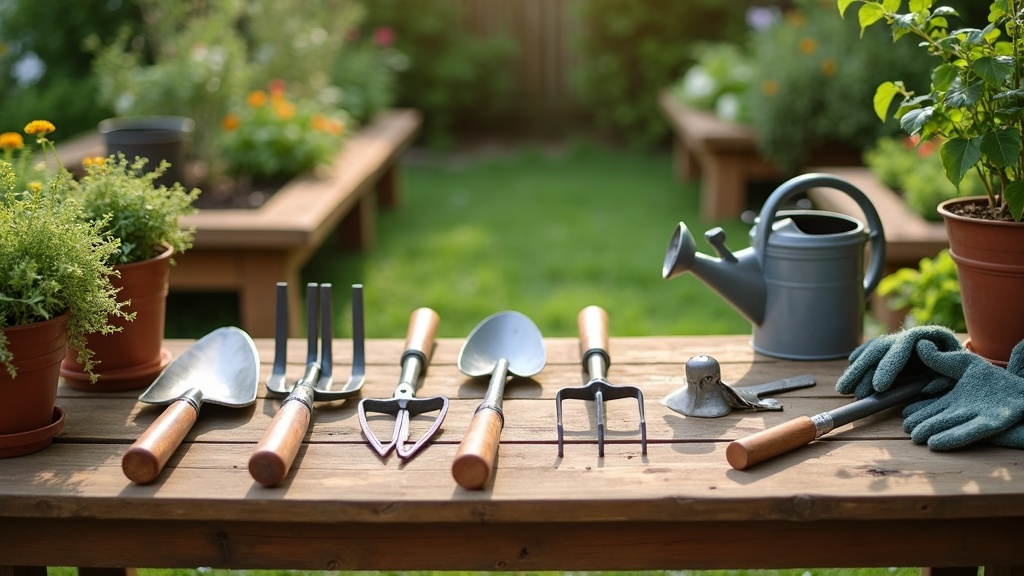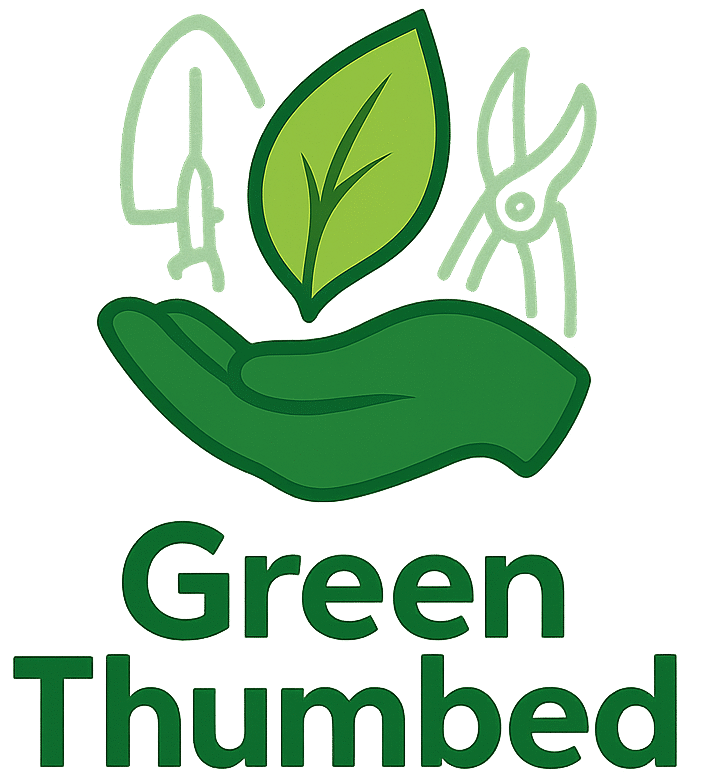Gardening can be one of the most peaceful and rewarding hobbies out there. Whether you’re looking to grow eye-catching flowers, maintain a lush lawn, or harvest homegrown veggies, the right tools make all the difference. For beginners, the options can feel overwhelming. Don’t worry—this guide covers the essential gardening tools every home gardener should know, making your gardening adventure much smoother and more enjoyable.

Why the Right Gardening Tools Matter
Gardening has become super popular lately, especially as more people work from home and look for enjoyable outdoor hobbies. The right equipment isn’t just about convenience; it helps prevent injuries, improves results, and keeps your plants healthy. Investing in quality tools gives a boost to your gardening and saves time, freeing you up to actually enjoy your space instead of wrestling with worn-out gear.
The home gardening market keeps growing fast, with online communities offering advice and showing off successes. Whether you’re working with a city balcony or a sprawling backyard, the tools you pick can totally change how enjoyable and easy gardening feels.
Getting Started: The Basics Every Gardener Needs
If you’re assembling your toolkit, having a solid collection of basics will cover almost every job. Here’s a quick look at what you’ll want to have on hand:
- Gloves: They protect your hands from thorns, splinters, and rough soil. Find gloves that are tough yet comfortable so you’ll wear them often.
- Trowel: Ideal for digging, scooping soil, transplanting seedlings, and pulling weeds. A sturdy, comfortable trowel is a must.
- Hand Pruners (Secateurs): Great for trimming branches, deadheading flowers, and cutting back perennials. Sharp, ergonomic ones help you garden longer without aching hands.
- Garden Fork: Loosens soil, turns compost, and aerates beds. Choose forks with strong tines for tougher jobs.
- Spade: Helps dig, edge, and move soil. A square-point spade works for most tasks.
- Watering Can or Hose with Adjustable Nozzle: Essential for keeping plants watered, especially where automatic systems aren’t practical. Adjustable nozzles let you control water flow.
- Garden Rake: Clears leaves, smooths beds, and breaks soil clumps. A well-balanced rake makes cleanup easier.
This collection will let you prep soil, prune, and plant with confidence. Good tools upfront mean fewer headaches as your garden grows.
Maintaining Your Tools for Longevity
With a few care habits, you can keep your tools working like new for years. Here are some tips I swear by:
- Clean tools after use to remove dirt and sap.
- Sharpen pruners and spades with a sharpening stone every few months.
- Oil wood handles so they don’t split.
- Hang tools up in a dry area to keep them rust-free.
Dull or dirty blades make garden tasks harder and can hurt your plants. Regular cleaning and sharpening smooth the way for easy gardening.
Choosing Tools That Fit Your Garden (and Your Hands)
Your garden’s size and style can guide tool choices. Container gardening? Look for lighter, smaller tools that won’t tire you out. Raised beds are easier to handle with longer handles. For heavy clay soil or larger yards, sturdier options pay off.
Try out tools in-store before buying. See if the weight and handle fit your grip, and opt for cushioned grips or contoured shapes if you have arthritis or smaller hands. Comfort makes long garden sessions much more pleasant.
Quick Start Guide: Building Your Gardening Toolkit
When you’re new to gardening, assembling your gear is a big first step. Here’s my method:
- Think About Your Plans: List the plants and chores you want to tackle. The tools you need depend on your garden goals—veggie patch, flowers, or herbs will all need slight tweaks.
- Collect the Basics: Stick with essentials: gloves, trowel, pruners, spade, and rake. These will handle most routine work.
- Pick Quality Items: High-quality tools might cost a little more upfront, but they outlast the cheap ones by seasons.
- Expand Carefully: After some practice, add extras like weeders, loppers for thicker branches, or a soil tester to dial things in.
- Stay Organized: A simple tool rack, caddy, or bucket keeps everything at arm’s reach and helps tools last longer.
Common Challenges and How to Avoid Them
Every gardener hits a few bumps. Here are common headaches and solutions:
- Blisters or Sore Hands: Upgrade gloves or try tools with comfier handles if you’re getting blisters.
- Rusty or Dull Tools: Always dry tools before you store them. Use a rust eraser if corrosion appears.
- Snapped Tools: Sturdy tools cost a bit more, but you won’t be replacing them every year.
- Lost Tools: Designate a spot in your garage or shed. Putting tools back right after use helps keep up the habit.
Soil Conditions Matter
Soil type really does affect which tools will serve you best. Tough clay demands rugged forks and spades that can handle the job. In sandy or loamy gardens, lighter tools are often plenty—and make the work less tiring. Testing tools in your actual garden area can be a smart move.
Plant Selection Impacts Your Toolkit
Caring for a veggie patch? A hoe or cultivator will help clear weeds. Planting roses or fruit trees? Invest in loppers or a pruning saw. Over time, you’ll get a sense of what extras help your specific plants thrive.
Take Up a Notch: Handy Tips That Make Gardening Easier
With a little experience, gardeners stumble upon tricks that make every job simpler. Here are a few favorites:
Paint Handles Brightly: Use colorful tape or paint on the ends of tools so they don’t disappear in soil or mulch.
Make Cleaning a Habit: Keep a rag or small brush near your tools so you get into the habit of wiping down gear every session.
Consider Multiuse Tools: While a multitool is handy for small jobs or tight spaces, specialty single tools generally perform better. Still, one good multitool can be useful for quick fixes or on-the-go work.
Borrow Before You Buy: Not sure about a bigger item? See if friends or your local community garden will lend you one first. It’s a win-win way to test what really helps you out.
Little hacks like these can help you avoid frustration and save money over the long run.
Putting Gardening Tools to Work: Everyday Applications
Having the right tool for each job really does make gardening feel less like work. I’ve turned forks into mini tillers for new beds, used a single trowel both for planting and for dividing overgrown bulbs, and relied on hand pruners to keep everything neat. Sometimes, you’ll be surprised by the versatility of a basic tool.
- Vegetable Beds: Trowels, spades, and forks always get the basics done—planting, soil mixing, and more.
- Flower Borders: Pruners and rakes tidy up borders, cut old flowers, and shape your plants without a fuss.
- Pots and Planters: Smaller tools and a gentle watering can keep container gardens in tip-top shape.
Frequently Asked Questions
New gardeners always have lots of questions! Here are some I hear the most:
Question: Which garden tools do I really need as a beginner?
Answer: Start with gloves, trowel, hand pruners, spade, and rake. These basics prepare you for almost anything.
Question: How can I keep my tools from rusting?
Answer: After each use, give tools a quick wipe and ensure they’re dry before storing in a dry place. A dab of oil here and there keeps blades working smoothly.
Question: When should I replace a gardening tool?
Answer: If handles split, heads crack, or blades are dull beyond sharpening, it’s time for a new one. Well-made tools usually last for ages with just a bit of care.
Wrapping Up: Making Gardening More Enjoyable
Smart tool choices and a bit of care make gardening more fun and less frustrating. With just a handful of good tools, you’ll be ready for anything your garden throws your way. Simple routines—like cleaning and keeping tools sorted—go a long way toward creating a growing space you love coming back to, season after season. Whatever your garden’s size or your experience level, the right toolkit can make all the difference in your gardening adventure.
